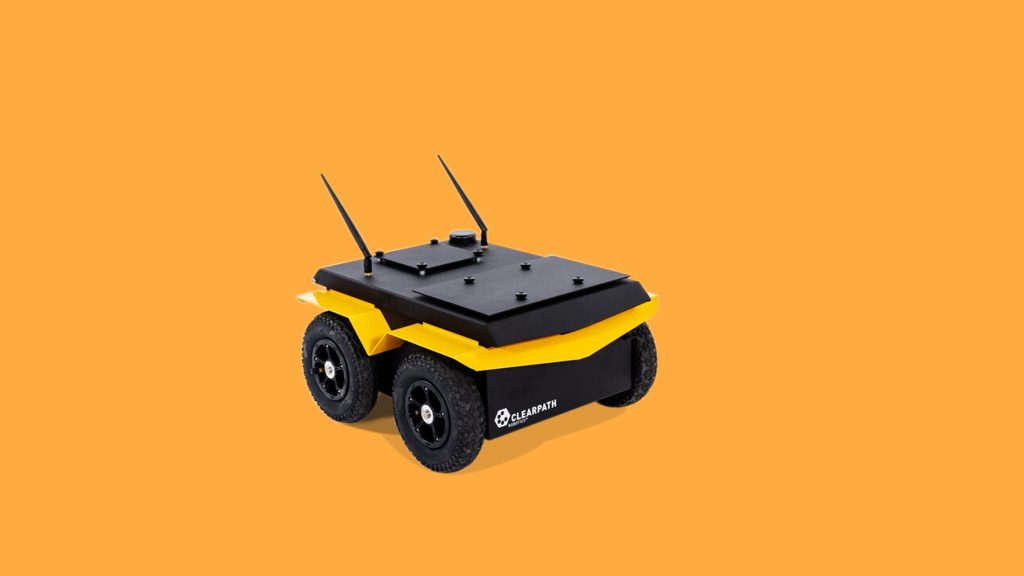WS-Bot-Combing Wearable Sensors and
Robotic Systems to Enhance Daily Monitoring
for Elder People
INTRODUCTION
Elderly people by definition from the United Nations are an age group of people from 60 years or over. Reports from the studies carried out by the United Nations show that there is a rapid increase in the number of seniors compared to the number of birthrates. A number of people develop complex diseases at their old age which will need the attention of other people to keep watch over them. Due to the frailty of old age, it is estimated, that in 2018 the number of falls from elderly people recorded was 35.6 million, out of this number 8.4 million resulted in injury while an estimated number of 32, 000 lost their lives as a result of the fall.
Therefore, there is a need to provide an alternative and better way of caring for the elderly which is the introduction of assistive technologies in their living area.
MY ROLE
Strategy
Planning
Design + Execution
Research
PLATFORMS
Mobile
Wearable Sensor
Jackal Robots
Developed by
Olaoluwa Oyedokun
Yi Zhu
Ruiqi Wang
YEAR
2022
Below is the video to demonstrate how the application works and how it will be beneficial to our everyday life.



To solve the above described challenges of existing methods for daily eldercare monitoring, we propose Ws-Bot, an approach that combines the strengths of wearable sensors and the benefits of robotic systems to enhance daily monitoring for elder people. The wearable sensors can provide 24-7 and user-friendly monitoring for direct bio signals of elder people which is beyond the ability of robotic systems. On the other hand, robotics systems can make up for the shortcoming of wearable sensors: providing verification to help eliminate the noise signals from sensors and enable efficient information conveyance. In our case, we selected falling down as the abnormal behaviors to be detected in our system, since it is more doable for experiments than heart disaster which we cannot easily pretend.
Illustration of the framework and workflow of our system below

The System Breakdown:
Elder people – This presents an age group of people from 60 years or over who need to be monitored.
Responders – This refers to people who receive the alarm of emergency events of elderly people and provide help, for example, the family members and health professionals.
Equipment List
- Jackal Mobile Robot with LIDAR and Camera (Robot System)
- E4 Wristband Wearable Sensor (Wearable System)
- Laptop (Host)
Host – This represents the central host that serves as the bridge connecting the wearable system, the robot system and the users in our system. And the potential function of the host is to provide cloud computing power for the robot system. We plan to use a laptop as the host and utilize Wi-Fi or ROS as the communication means.
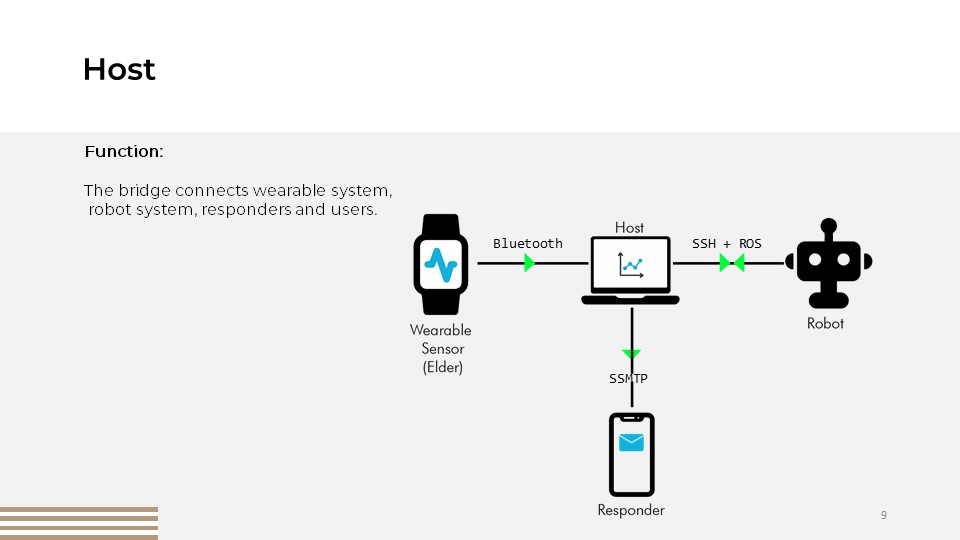
Wearable System – This refers to wearable sensors worn by elder people. We plan to utilize the E4 wristband as the hardware in this system, and the signals captured include Heart Rate (HR), Accelerometer (ACC), Skin Temperature (SKT) and Blood Volume Pulse (BVP). ACC is used for safety monitoring, e.g., falling down, while others are used for health monitoring, e.g., heart disease, fever and cardiovascular disease. We will use the cloud platform provided by the sensor itself for data conveying and develop some algorithms to assess the safety and health metric based on the raw data.
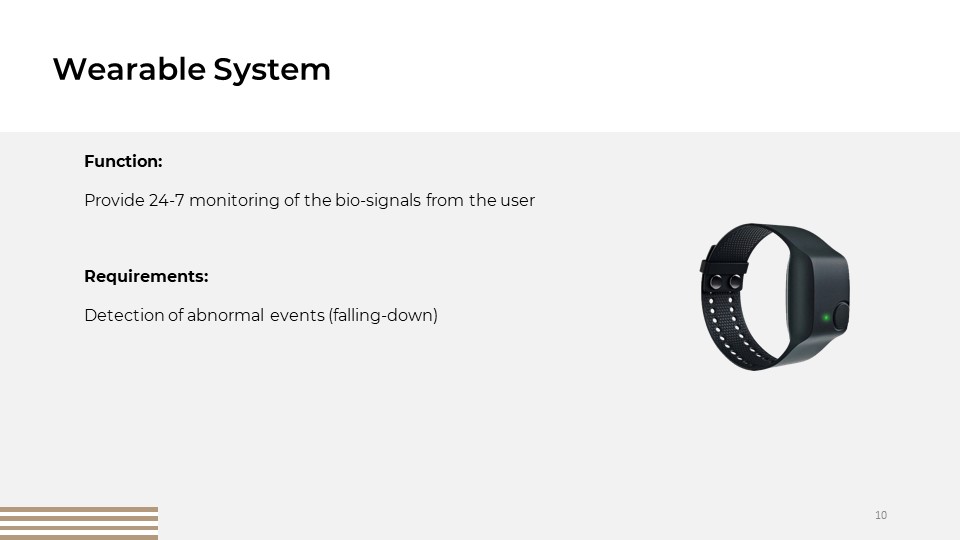
Wearable System – We chose signals from the accelerometer (ACC) of E4 wristband
Our focus was on the change in the value of the Z-axis (action) and the change in the G-value (acceleration)
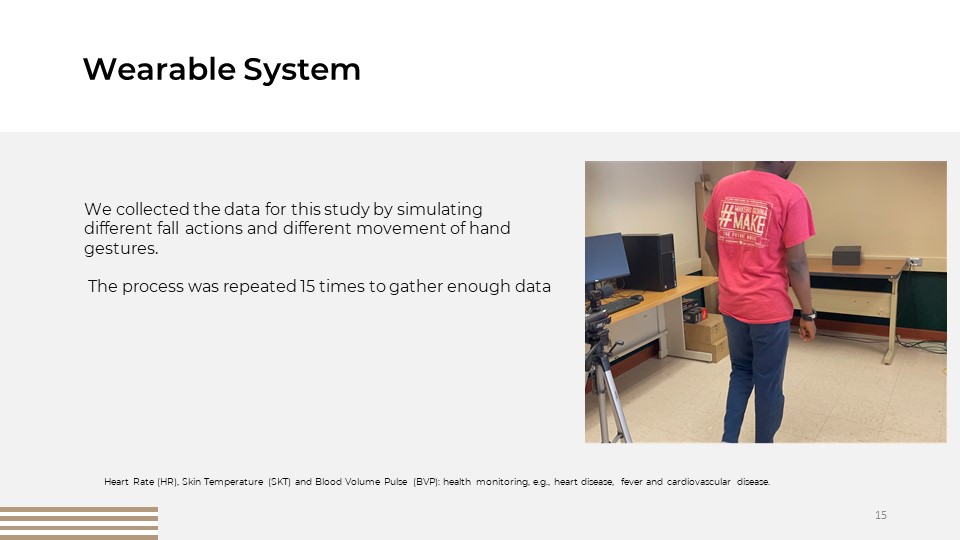
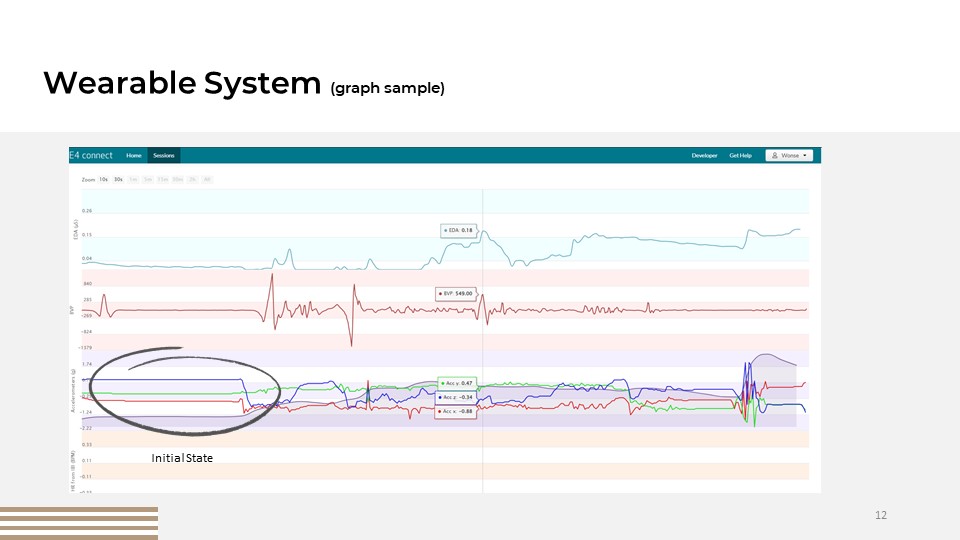
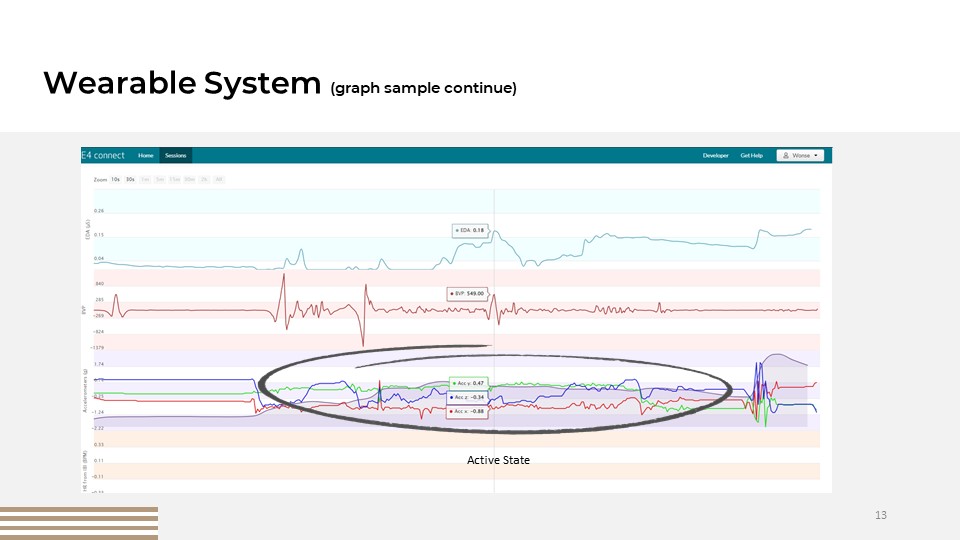
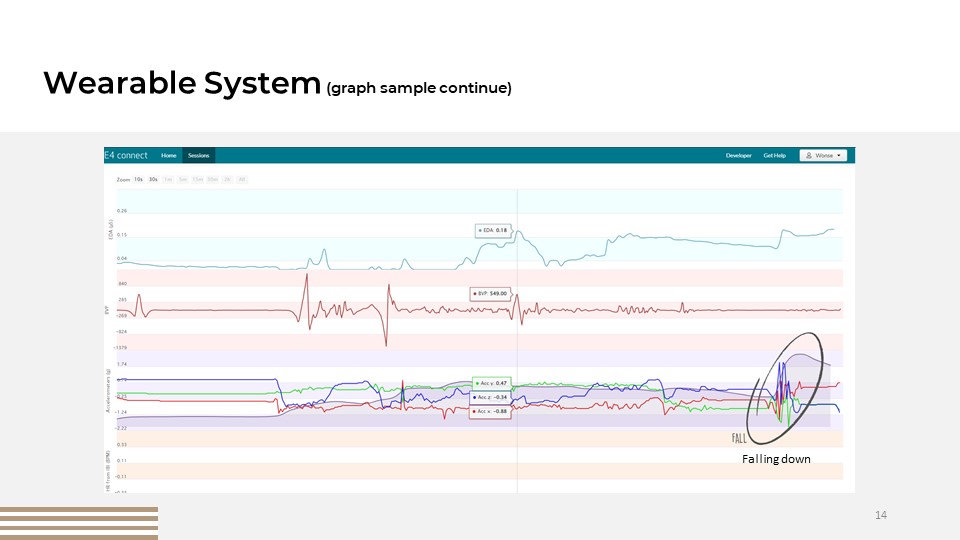
To process the data so that the system can decide the states of the user, we apply Machine learning algorithm Support Vector Machine (SVM) to classify the normal state and falling state. SVM is a widely used algorithm for classification. In our case, the model should be built with changes in Z value and changes in g-value (acceleration) from ACC sensor data.
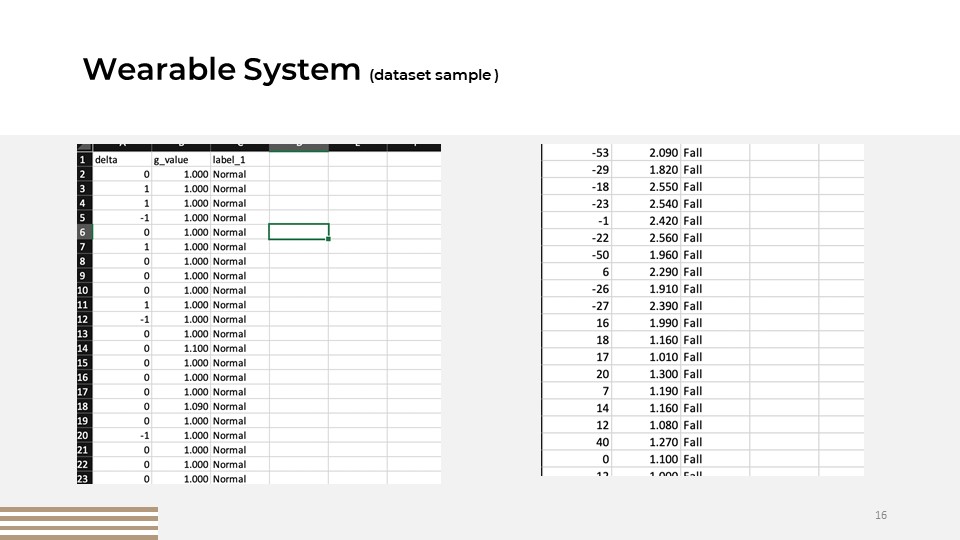
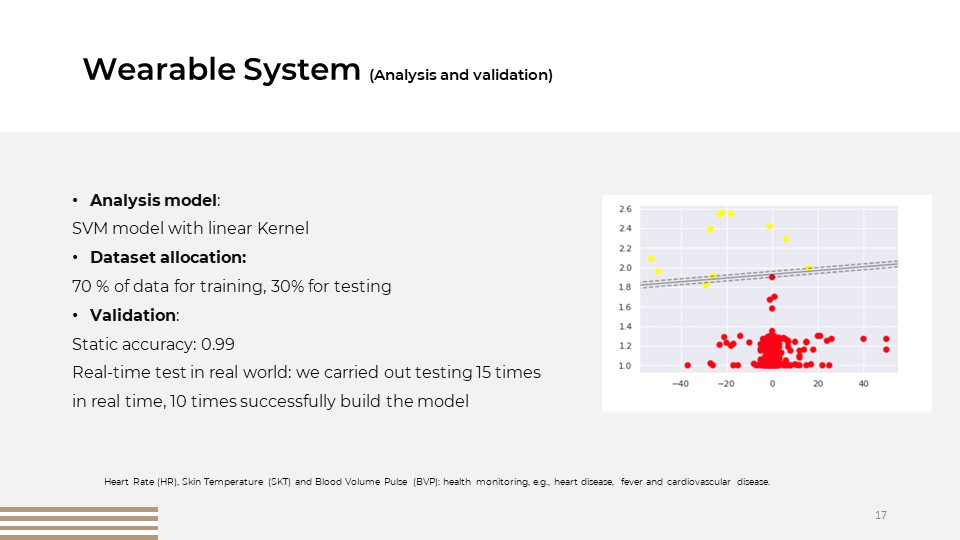
Robot System – The robot system refers to a mobile robot that serves as an additional source for monitoring elder people. The functions of the robot system are to
1. verify abnormal events detected by the wearable system;
2. provide alarms and reminders for elder people;
3. capture and convey visual situational information for responders.
We selected a Jackal Mobile Robot (seen below) as the equipment for the robot system. The functions of the robot system are to verify abnormal events detected by the wearable systems and capture and convey visual situational information to responders.
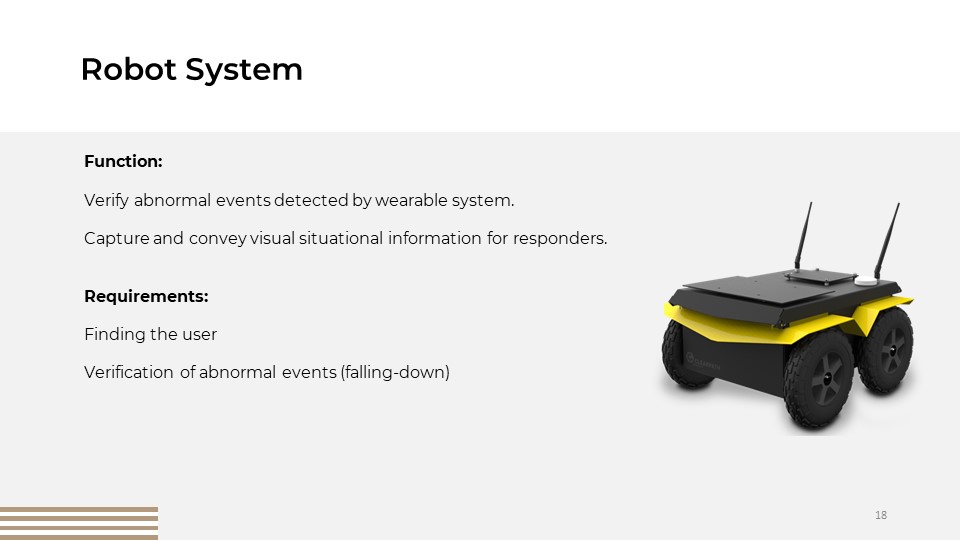
we design a robot navigation system that combines point-to-point (P2P) navigation and computer vision (CV) based navigation. The procedure of our navigation system is shown in Figure 9. The robots start to conduct P2P navigation to checkpoints in each possible area, and after reaching one checkpoint, the CV based navigation takes over to find the user. If the user is found by the CV based navigation, the navigation system stops working, if not, the P2P navigation takes over to navigate to the next checkpoint and repeat above procedures until the user is found.
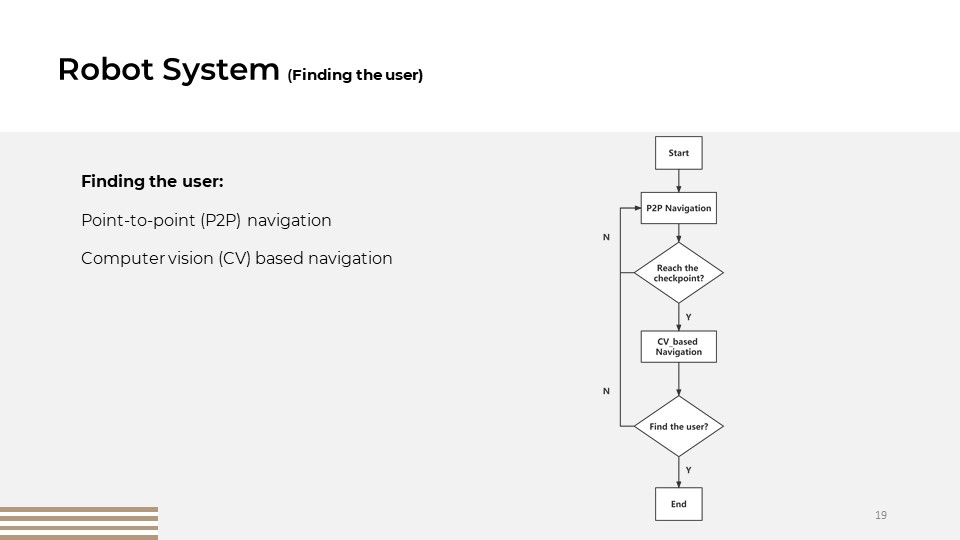
Tested 10 times with a success rate of 100%


Final Demo

